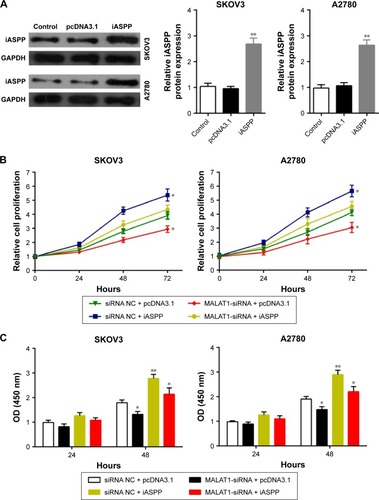Figures & data
Figure 1 Long noncoding RNA MALAT1 was specifically upregulated in ovarian cancer tissues and cell lines.
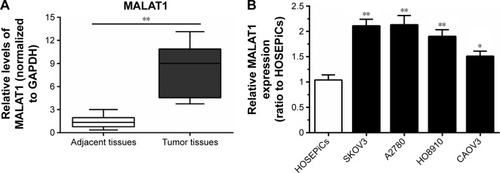
Figure 2 MALAT1 promoted ovarian cancer-cell growth.
Abbreviations: si, small interfering; PCR, polymerase chain reaction; NC, negative control; OD, optical density.
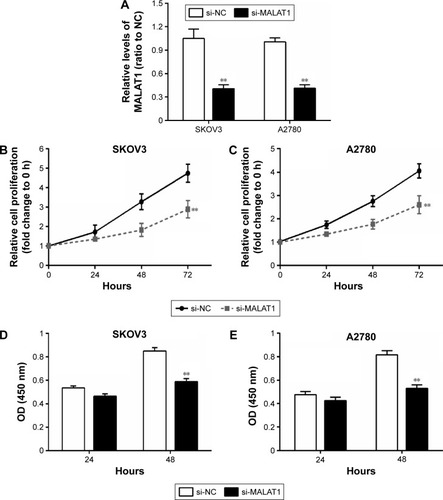
Figure 3 miR-506 expression was downregulated in ovarian cancer tissues and negatively correlated with lncRNA-MALAT1.
Abbreviations: miR, microRNA; lncRNA, long noncoding RNA; PCR, polymerase chain reaction; si, small interfering; NC, negative control.
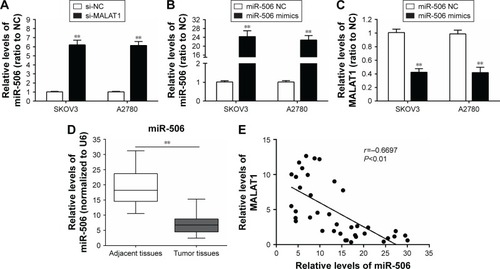
Figure 4 MALAT1 regulated miR-506 by direct targeting.
Abbreviations: miR, microRNA; wt, wild type; UTR, untranslated region; mut, mutant; NC, negative control.
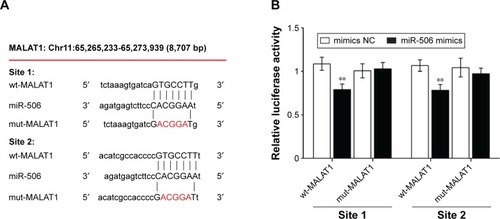
Figure 5 miR-506 inhibited ovarian cancer-cell growth.
Abbreviations: miR, microRNA; NC, negative control; OD, optical density.

Figure 6 miR-506 regulated iASPP expression by direct targeting.
Abbreviations: miR, microRNA; wt, wild type; UTR, untranslated region; mut, mutant; NC, negative control.
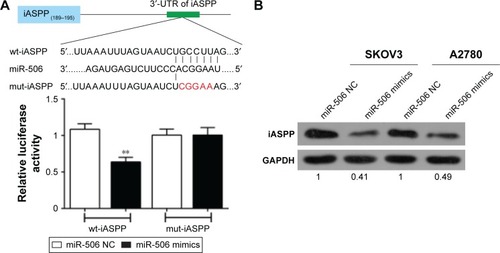
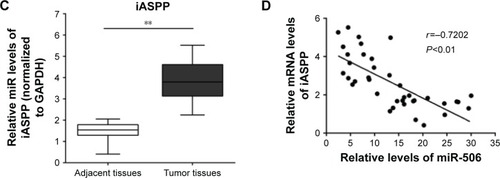
Figure 7 MALAT1 was positively correlated with iASPP.
Abbreviations: si, small interfering; NC, negative control.
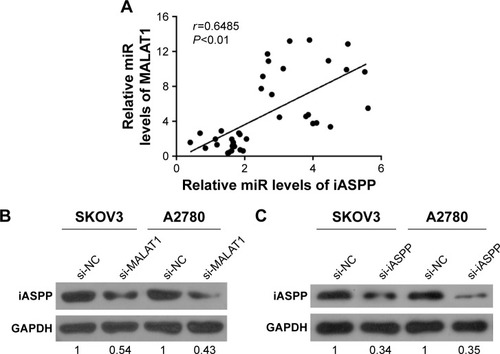
Figure 8 iASPP promoted ovarian cancer-cell growth.
Abbreviations: si, small interfering; NC, negative control; OD, optical density.
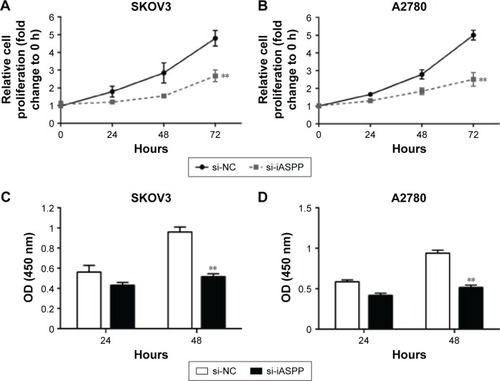
Figure 9 MALAT1 regulated ovarian cancer cell growth through iASPP.
Abbreviations: pcDNA, plasmid complementary DNA; si, small interfering; NC, negative control; OD, optical density.
